|
On an IPT we will teach you to work in Manual mode and get the right exposure for bright white subjects like this Snow Goose. Every time. We will teach you to read the wind and the light and understand how–in combination–they affect flight photography. |
Samuel Mulder on Why an IPT?
Samuel Mulder attended the 2007 Bosque IPT. I came across his review recently and wanted to share it with you here. His unsolicited review says it all. It is remarkably accurate and five years later it is still relevant. The 2007 season at Bosque was a very poor one; photographic conditions were less than ideal. On each and every IPT, I and my co-leaders do our very best to make the trip as rewarding and as productive as possible. Each of us puts our heart and soul into them. Most folks are very appreciative of our efforts. On rare occasions, someone heads home dissatisfied. I used to take things like that personally, but over the years have grown to realize that in most cases, the problems were more about them than about me. Folks who arrived happy generally headed home happy, and folks who were bitter and unhappy when they arrived generally went home bitter and unhappy. Fortunately, over the past dozen years very few folks who have traveled with us fit into that last group. The bottom line is that I am always proud of my efforts while leading BAA IPTs. I am confident in my abilities as a teacher and as a photographer; I do not need positive feedback to know that I have done a good job, but positive feedback as well as constructive criticism is always received with a smile. On rare occasion, however, I receive a note or an e-mail that puts a bigger-than-usual smile on my face. Samuel’s unsolicited review, which appears below, is right at the top of that category.
|
On an IPT we will have the group in the right spot at the right time. With eighteen years of experience at Bosque I know the place better than anyone. Every time that we make a move we will explain why. You do need to be prepared to move quickly without speeding on the refuge roads or on Highway 1. |
Review of BIRDS AS ART IPT: Bosque 2007 by Samuel Mulder
A while back, I asked for online advice about attending a photographic workshop. In response to all of those who helped me then and to help those trying to make similar decisions, I thought it would be good to write a review of the experience. I should note that this review represents only one individual experience on one particular tour. I’m sure other workshop leaders are very good and—as this is my only tour experience—I am not comparing this particular workshop or workshop leader to any other workshop or leader.
Reason for going: my lack of experience
In my mind, there are two good, equally legitimate reasons for going on a photo workshop. The first is to have an expert guide who can teach you about a location that you have a strong interest in and to insure that you get the best photos possible. The second is to learn and grow as a photographer. My interest was completely the second. The workshop that I choose was in a location that I was very familiar with and where I had spent a fair amount of time shooting. Bosque is an hour and a half away and I’d been there every month for the past year. I was completely focused on learning as much as possible, even at the expense of missing some nice shots, secure in the knowledge that I could come back anytime and put what I’d learned into practice. Many of the participants in the workshop seemed to be more interested in the first reason. I think that is very reasonable, and would consider joining a workshop if I were going to a once-in-a-lifetime destination and wanted to insure that I made the most of it.
The participants
The participants were an interesting group. I was surprised, as I’d expected mostly beginners. Instead, many of the participants were frequent workshop attendees and were very experienced. I would guess that the majority of the participants were retired and enjoying photography as a hobby. I was definitely one of the youngest and least experienced attendees. This worked out well for me as I was able to watch and learn from the participants as well as from the instructors.
One of my main questions before going had been about equipment. My longest lens is the 100-400. Sure enough, almost everyone else had a 500 or 600mm lens (I think there was one Nikon guy using an 80-400). Not only are these lenses longer to start with, they also take tele-converters. As it turns out, this wasn’t a huge deal.
Everyone was extremely friendly and I enjoyed the conversation both at meals and in the field. It was fun talking to people who shared a passion, and I can see why some attend these workshops for the social aspect. People were also generous and some equipment was shared (thanks to Malcolm for the chance to try out a 300/2.8 and 2x converter and to Artie for the loan of the 3-stop neutral density filter).
Classroom Learning
We essentially had two shooting sessions each day, a morning session and a late-afternoon session. In the middle of the day and sometimes in the evening, we had sessions with a projector in town. I would say that the field and classroom sessions were about equally educationally.
The most educational classroom session for me was the photo critique. Having my own photos critiqued was helpful, but more in a re-affirming way than a revelatory way. I had spent a lot of time thinking about my own photos and had a pretty good sense of the strengths and weaknesses. Art was able to point out a few issues that I hadn’t considered and I was able to dramatically improve at least one of the images using a crop that he suggested. My photos weren’t that great, but I at least had some ideas about why they weren’t that great. The more useful part of the evening though was the critique of other’s photos. I was able to compare my first impressions of a photo on the screen with Artie’s impression (and comments by the other instructors). This was very educational and I learned a lot about minor things that can greatly improve or hurt a photo. Almost all of the images presented were of high quality, so the comments were generally about subtleties.
The second most useful classroom session was watching Art go through his images from the morning and make a selection. Seeing Artie’s RAW files, unedited and un-culled was very educational and something I’d have never been able to do outside the workshop. After selecting one photo he proceeded to go through his processing routine. His environment is fairly different than mine; he uses Windows and BreezeBrowser and I use Mac and Lightroom but I was still able to learn a lot about the thinking that goes into editing an image.
The other extensive classroom session was a photoshop session by one of the c0-leaders who was a Photoshop wizard and able to work magic on the photos. This was less interesting to me as I work with computers in my day job and just don’t have much interest in this type of processing and optimization. The slide programs that Art showed of his own work were amazing and his commentary entertaining and insightful. One mid-day we were treated to a presentation by Andy Rouse, a UK photographer whose work I was not familiar with. I’ve since ordered most of his books; he really blew me away. Andy then spent the afternoon/evening shooting session with us.
|
On an IPT We will teach you to create pleasing blurs. We will teach you to anticipate the blast-offs and to know which way the birds will fly. |
In-the-Field Instruction
Shooting in the field on this kind of tour allows you to get as much or as little as you want out of it. At the extreme end, some of the participants seemed to just set up and do their own thing at each place that we stopped, more or less ignoring the instructors. At the other end of the spectrum, I typically stuck to Artie like glue. He would say “I think we should be 40 yards that way for the best light angle” and start walking and I’d immediately pack up and go with him. Most of the other participants stayed put. This highlights an important point. I want to thank those who advised me not to rent a longer lens for the workshop. Even though I was one of the only ones without a big gun, the flexibility of having lighter equipment that I was familiar with allowed me to focus on the instructors and on learning as much as possible from them. I may have missed some nice shots (or had to crop a little more), but I think I also learned more than I would have if I were constantly grappling with an unfamiliar big rig.
All of the instructors were photographing but were good about moving about among the participants and answering questions and offering advice. I learned a lot in the field about situational awareness… watching the light and wind conditions and recognizing changing situations. I also started using manual exposure for the first time and really got to see when it made sense. Artie and the other instructors were quick to point out good opportunities. They were very sensitive towards those of us with shorter lenses and offered alternative advice about positioning and good shots to us. Artie also encouraged us to experiment with more artistic shots (blurs and such). I have not been a big fan of them in the past, but figured I might as well try it out. I came away happy with several blurred shots that I never would have taken before. Art was also very accommodating to people with different interests. For example, on the last day everyone was heading back into Socorro to shoot wigeons on a pond there and I expressed an interest in staying on the refuge. The wigeons were great, but we’d done them the day before and I have a real passion for the refuge. Artie responded by asking Jim Neiger to stay behind and work with a couple of us while the main group went into town. This brings up an important point: all of the instructors on the workshop were amazing. Jim was someone whose work I’d admired on the various forums for a long time and who I’d consider doing a workshop with based on his flight shots.
Value
The pace of the workshop was just about right for me with plenty of learning opportunities interspersed with chances to try things out on my own. I’m not sure how much better personalized instruction would have been as I pretty much had Artie’s attention any time I wanted it and was able to benefit by learning from different instructors with different styles. I would point out that at least this particular workshop was geared at intermediate photographers. I would recommend knowing how to work the camera and reading some books (and visiting the various forums) before signing up. An IPT is probably not the best place to be fumbling around trying to figure out how to use the camera… Comparing the cost to something like a college course, on a per hour basis, the workshop is very reasonable and the caliber of the instructors can’t be found in your local community college. For me the tradeoff came down to workshop versus more equipment. I think I made the right choice and it is one I will make again. This definitely won’t be my last workshop. I grew more as a photographer in three days than I had in the previous year. I hope this is helpful and didn’t sound too much like an advertisement. I did thoroughly enjoy myself and highly recommend the experience.
|
On an IPT we will teach you to work in Manual mode and get the right exposure for lighter than middle-toned subjects like this adult Sandhill Crane and will explain the intricacies of photographing single cranes in flight. |
My Comments on Samuel’s Review
Thanks a ton Samuel for your insightful comments; they are greatly appreciated. I could not have written anything myself that so well highlighted all of the important things that we try to accomplish on each IPT. One excellent point that Samuel makes is that to get the most from any photography tour participants should stay close to one of the instructors most of the time and ask lots of questions. Though I always stress that point on each IPT I am sometimes lonely in the field. In addition, I often edit my work at lunch and encourage folks to gather around while we are waiting for our orders. Many folks realize the huge value in that and gather around while waiting for their burgers and fajitas.
|
Oh, I almost forget: you will have lots of chances to make some great images. |
BOSQUE del APACHE 2012 IPT: “The Complete Bosque Experience.” NOV 21-27, 2012. 7-FULL DAYS: $3399. Co-leader: Denise Ippolito. Introductory Slide program: 6:30 pm on 11/20. Limit: 12/Openings 5.
Tens of thousand of Snow Geese, 10,000 Sandhill Cranes, ducks including point-blank American Wigeon and Wood Duck, amazing sunrises, sunsets, and blast-offs. Live, eat, and breathe photography with one of (if not the) world’s premier photographic educators at one of his very favorite locations on the planet. Top-notch Photoshop instruction. This will make 18 consecutive Novembers at Bosque for me. Nobody knows the place better than I do. Join us to learn to think like a pro, to recognize situations and to anticipate them based on the weather, especially the light and the wind direction. Every time we make a move we will let you know why. When you head home applying what you learned will prove to be invaluable.
The cast of co-leaders includes Denise Ippolito, Jim Heupel, and Mike Hannisian.
|
Do consider joining me at one of my soul places. |

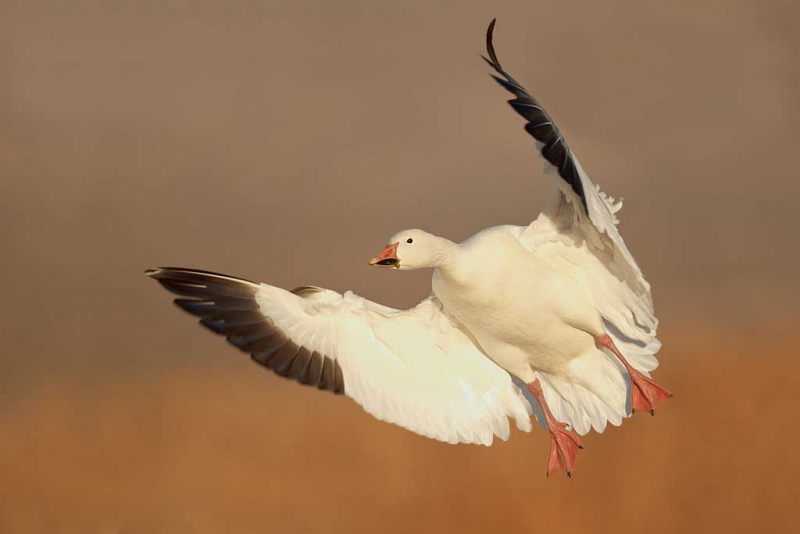
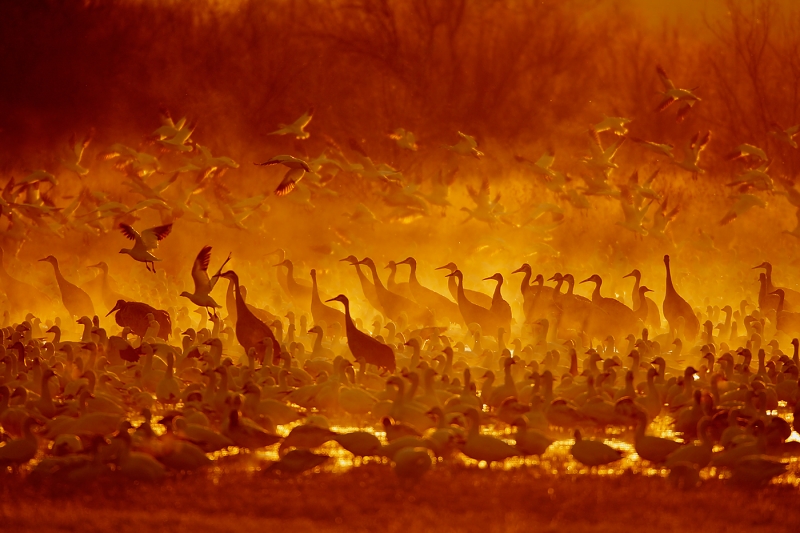
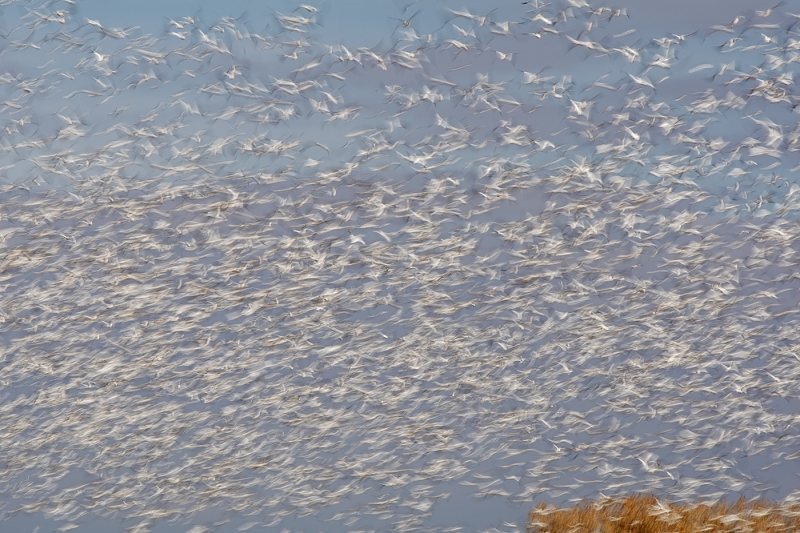
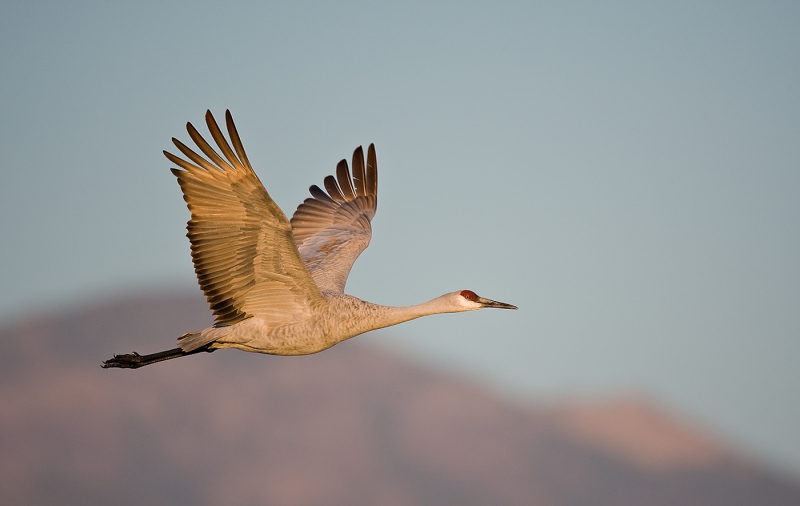
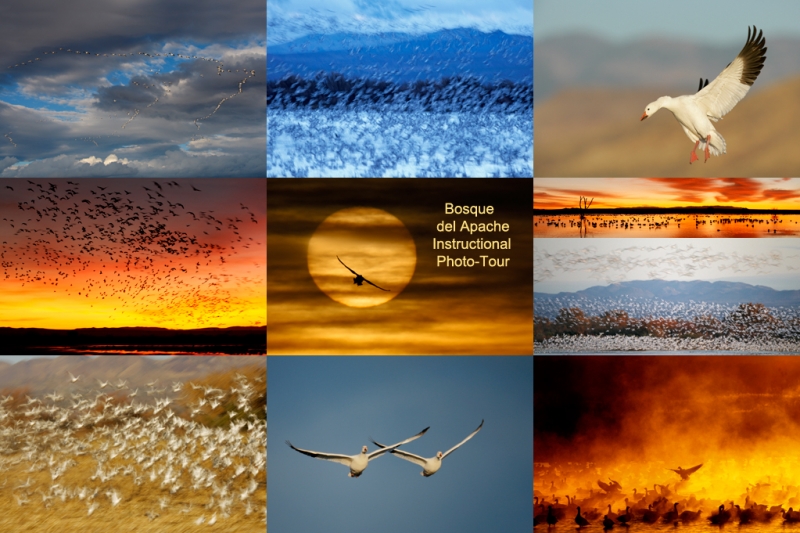
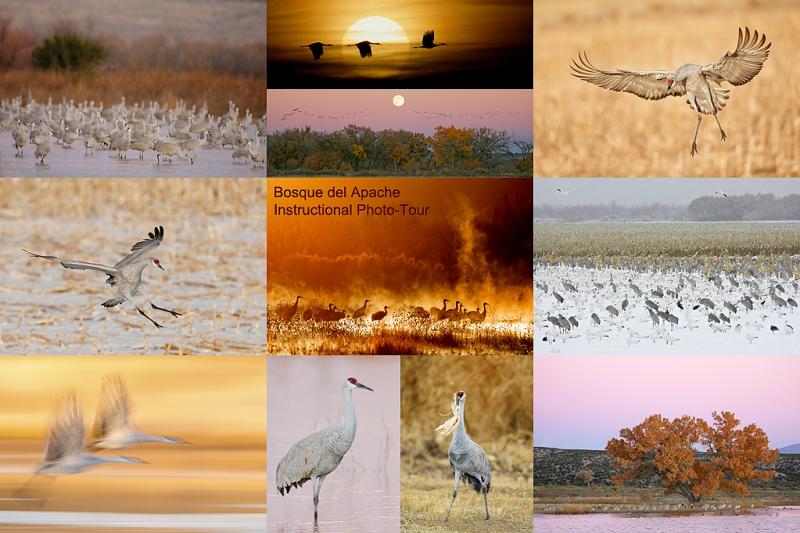













Thanks Sachin, Many folks write stating that they will take an IPT “when the get better.” The best time to join us, however, is when you are first learning. The less you know the more you will learn provided that you stay close to me and ask tons of questions.
I do hope that you guys can make the seminar :).
Ditto EVERYTHING in these comments. I had never been to Bosque, and it was an awe enspiring trip, in addition to the photograpy. Everything said here about the conditions, people, and instruction is absolutely true. My personal learning was immense, and I hope to take this trip again……after galavanting around after you guessed it…more birds. Absolutely loved every minute. Hi Artie !
Thanks for your kind words Louise. We did have fun!
I started photography in late 2009 and it took me three years to really improve my skill and understand and implement some important things which took really long time. I feel I wasted just too many years.
Many times I feel I should have taken at least on IPT to quickly learn some of the most important things, which I ultimately learned after joining BPN and posting my images there on regular basis for critique.
I realized three most important things to do if you are serious about your photography are:
1. Understand your equipment
2. be passionate
3. Take IPT early to accelerate learning
Taking IPT early ensures you avoid wasting time and money by going on photography trips on your own and come home with mostly disappointing images. After one IPT alone one can see drastic improvement in skill and creating appealing images and after that every trip can be productive.
I again want to thank Artie for his blog and wealth of information that he shares here.
– Sachin Saraf